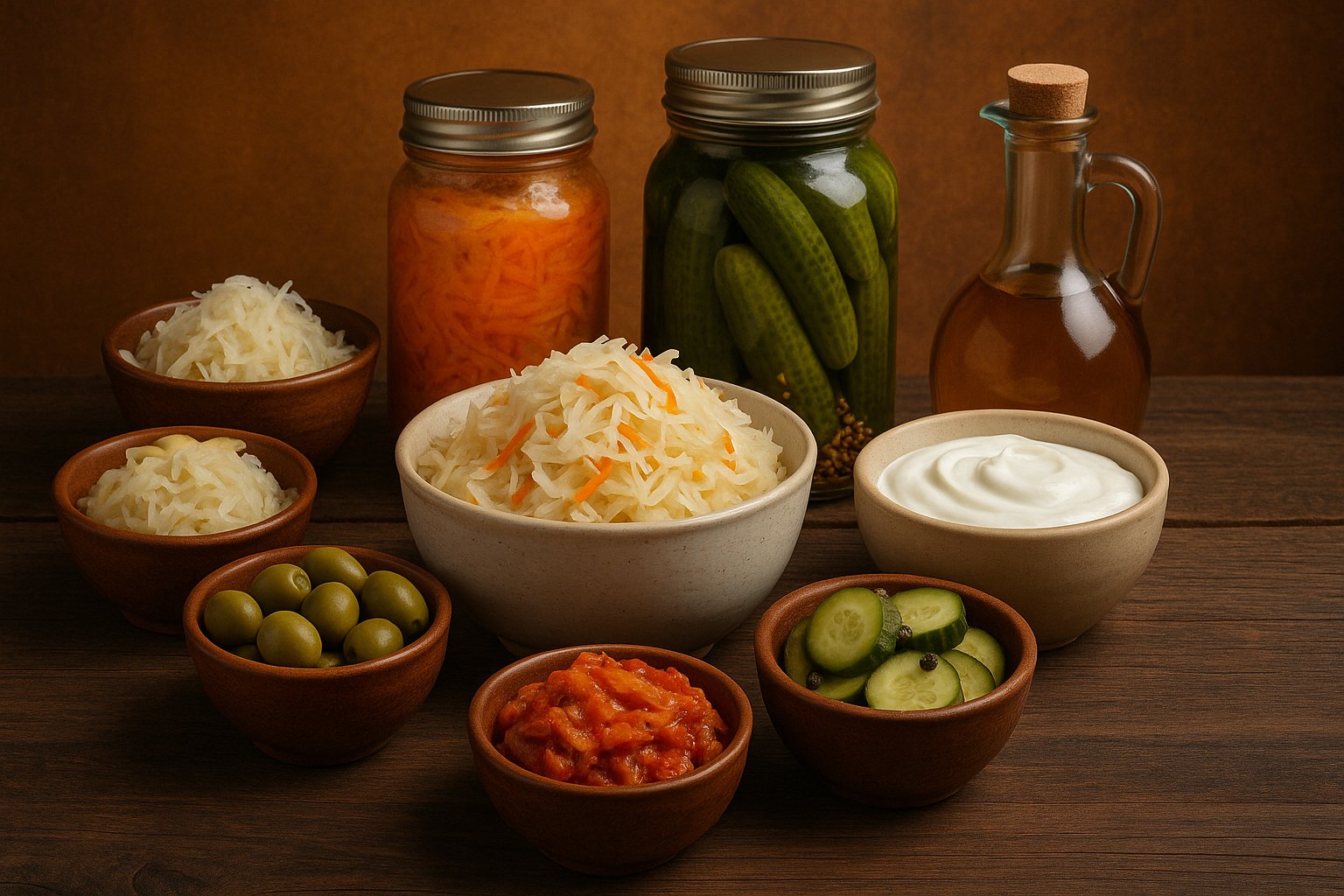
Exploring Fermented Foods: Ancient Flavors and Modern Health Benefits in 2025
Food 🍽️ 2025-04-23 6 minutes to readIn recent years, the culinary world has witnessed a resurgence of interest in fermented foods, a trend that's expected to continue to grow in 2025. Offering a unique blend of ancient flavors and significant health benefits, these foods are praiseworthy for both their flavorful diversity and their contributions to gut health. From enhancing digestive systems to potentially boosting immune functions, fermented foods are captivating the attention of health enthusiasts and foodies alike. In this comprehensive guide, we will delve into how to select the best fermented foods, the maintenance of these foods within your diet, and the long-term benefits they offer.
Choosing the Right Fermented Foods
When it comes to incorporating fermented foods into your diet, variety is the spice of life. From the tangy taste of kimchi to the sour notes of kombucha, the selection available is extensive, offering something for every palate. But how do you choose the right fermented foods for you? Here are some key considerations:
Understand Your Taste Preferences
Fermented foods come from a wide array of cultural backgrounds and thus carry unique flavors. For instance, if you enjoy spicy and pungent flavors, you might gravitate towards kimchi, a traditional Korean dish made from fermented cabbage. If you prefer something milder, yogurt might be a better fit, offering a creamy but slightly tart flavor.
Consider Dietary Needs and Restrictions
It's crucial to consider any dietary restrictions you may have. For example, individuals with lactose intolerance can often enjoy kefir, which is lower in lactose due to the fermentation process. Similarly, those following a gluten-free diet can opt for naturally gluten-free options like sauerkraut or pickles.
Evaluate Nutritional Content
Check the nutritional labels to understand what probiotics and nutrients each option offers. Foods such as miso and tempeh are not only rich in probiotics but also provide a source of protein, making them excellent options for vegetarians and vegans. Always look for products that include live active cultures to ensure maximum probiotic benefits.
Source Quality Products
With the popularity of fermented foods, it's vital to select products that maintain high standards in production. Opt for organic and locally sourced options when possible to ensure minimal preservatives and added sugars.
Maintenance and Ownership of Fermented Foods
Successfully incorporating fermented foods into your lifestyle requires a little planning and understanding of their maintenance. Here’s how you can do it:
Storage Considerations
Most fermented foods should be stored in the refrigerator to slow down further fermentation and prolong shelf life. This is especially true for dairy-based ferments like yogurt and kefir, which can spoil if left unrefrigerated.
Homemade vs. Store-Bought
While many enjoy making their fermented foods at home, which allows for greater control over ingredients and taste, it requires a commitment to learning safe fermentation practices. Store-bought options may provide more convenience and consistency.
Time Investment
Homemade fermented foods take time to prepare and ferment, sometimes requiring weeks to reach the desired flavor and probiotic content. Assess your schedule and determine if you can commit to the time it takes to prepare and maintain a steady supply. For busy schedules, high-quality store-bought options can save significant time.
Balancing Dietary Intake
Incorporating fermented foods into your diet doesn’t mean overhauling your current meals. Instead, aim to add small amounts throughout your day; for instance, enjoy a serving of yogurt with breakfast or include a side of sauerkraut with your lunch.
Final Thoughts: Embracing Fermented Foods
As we navigate through 2025, the growing trend around fermented foods shows no sign of waning. By understanding how to choose the right products, storing them adequately, and seamlessly integrating them into your daily life, you can unlock a host of nutritional benefits that these ancient foods have to offer. With their potential to enhance both flavor profiles and health, they represent a delicious and wholesome addition to diverse diets.
Key Tips
- Experiment with different types of fermented foods to find those you enjoy the most.
- Read labels carefully to ensure live cultures and minimal additives.
- Balance fermented foods with other dietary components to optimize health benefits.
- Store correctly to maintain both taste and nutritional value.
Incorporate these simple practices to fully appreciate the vibrant world of fermented foods. Whether you're starting your journey with a jar of pickles or delving into the rich, spicy layers of kimchi, these foods promise a journey of taste and wellness like no other.
Fermented foods present a unique fusion of traditional flavors and modern health advantages, making their mark as staples in 2025's dietary landscape. Choosing the right fermented foods involves understanding taste preferences, dietary restrictions, nutritional content, and quality. Storage and maintenance require attention, whether opting for homemade or store-bought varieties. Finally, integrating them methodically into daily meals enables the reaping of numerous health benefits. By embracing these practices, you can enjoy a flavorful addition to your diet that's beneficial for your body and gratifying to your taste buds.
